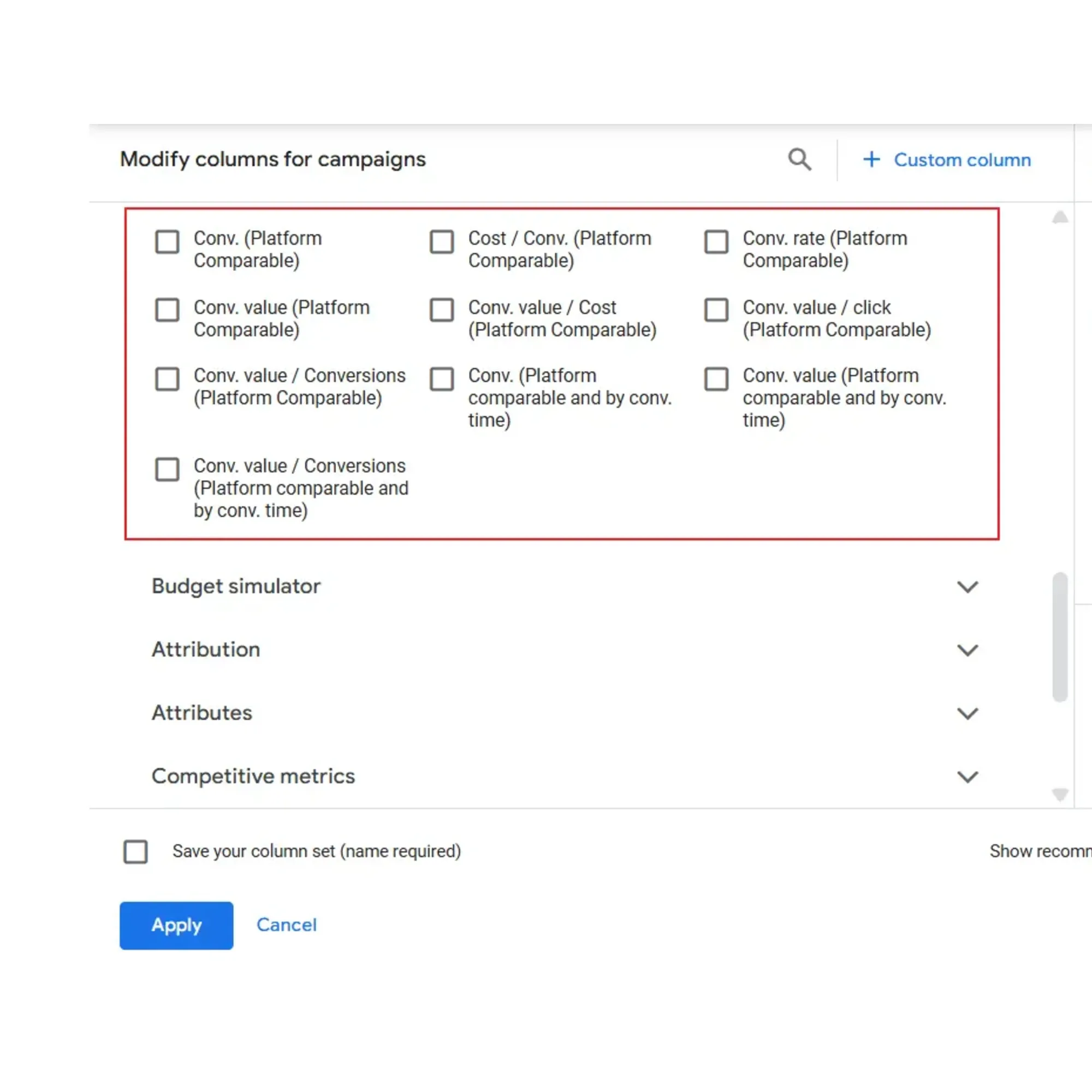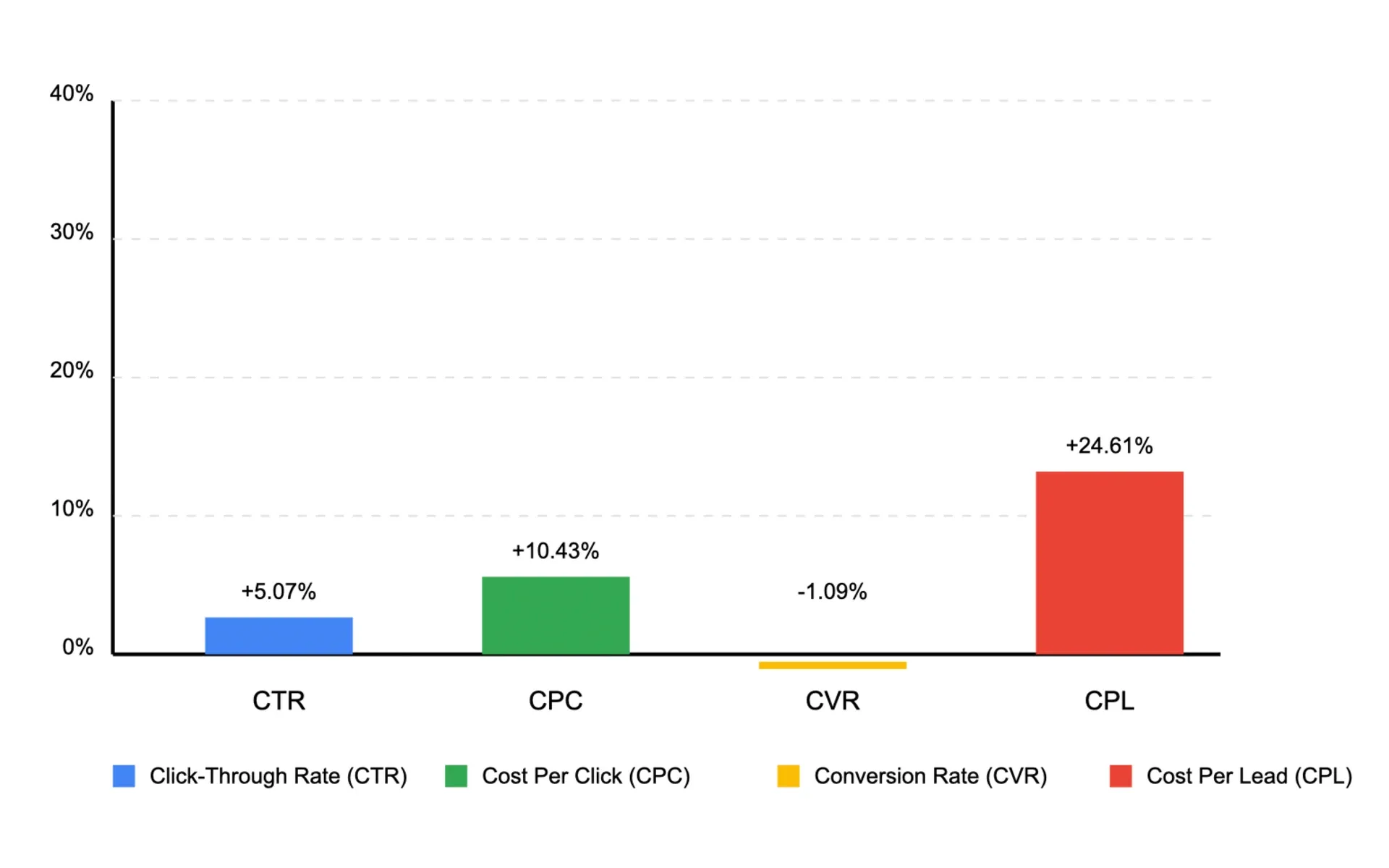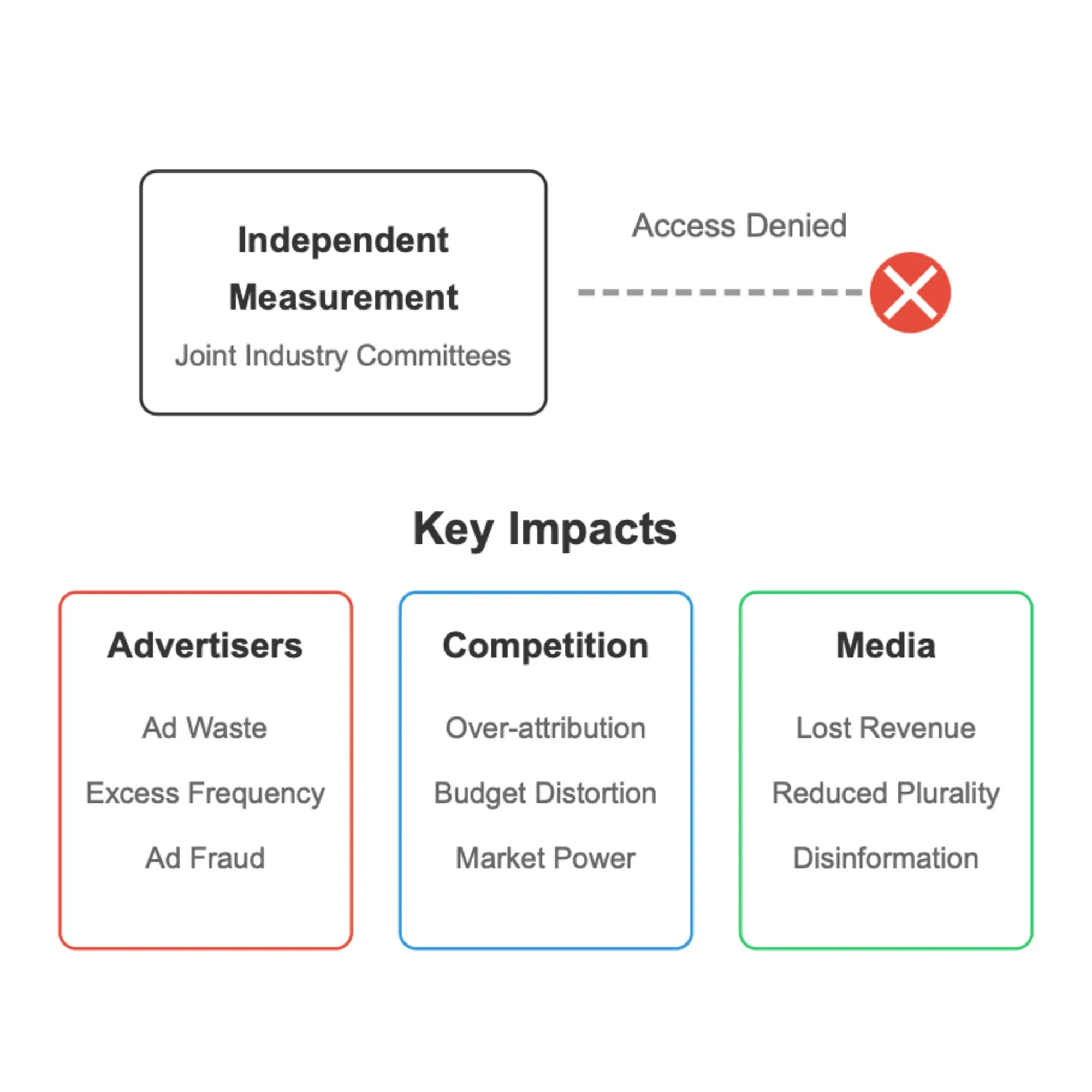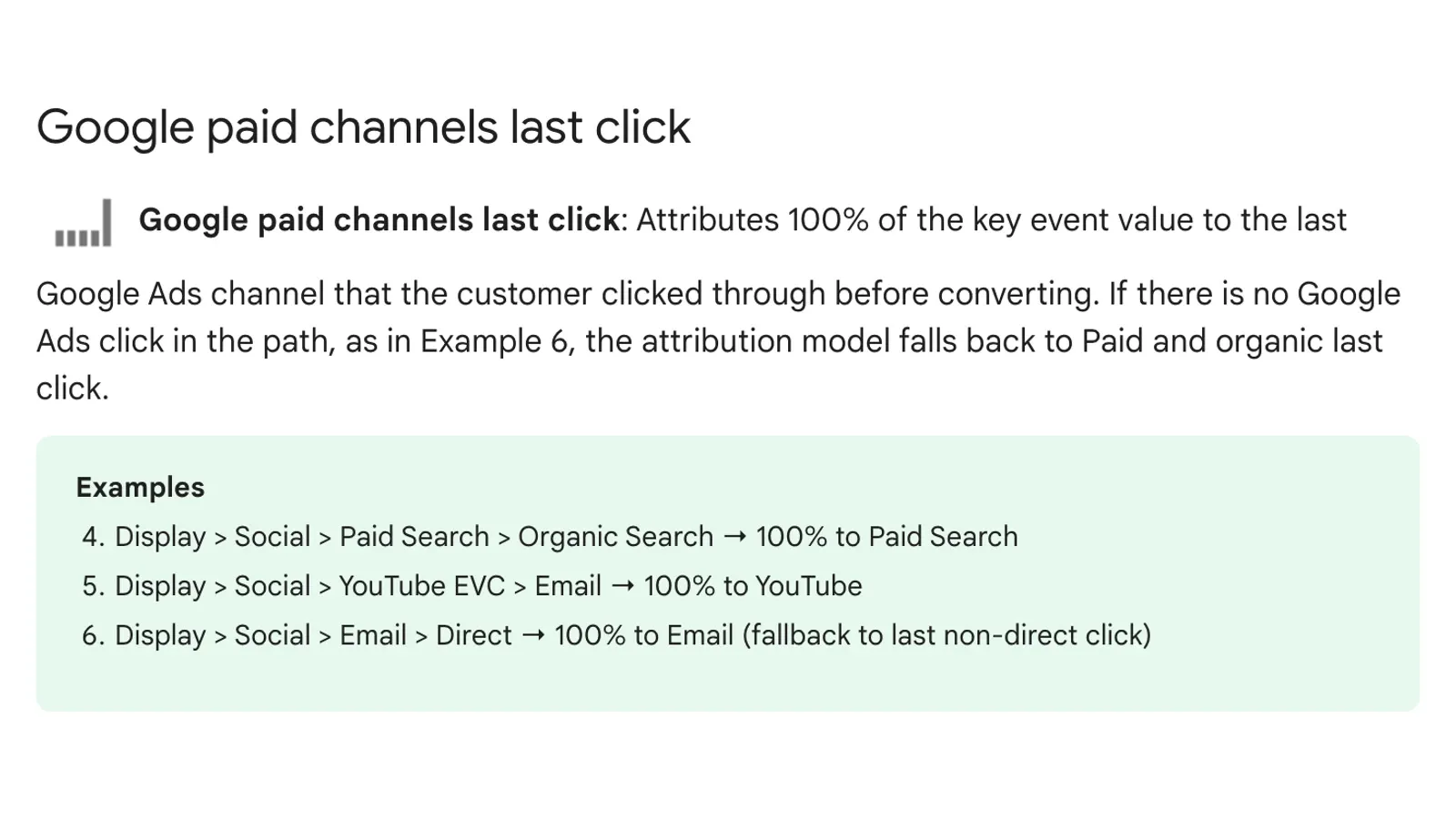Last-touch returns amid new Google features
Understanding the complexities of attribution methods as Google introduces platform-comparable columns.

Google has launched new platform-comparable conversion tracking columns for its Demand Gen campaigns, offering advertisers more nuanced measurement capabilities. The announcement comes two days ago as marketing professionals continue seeking accurate performance benchmarks across platforms.
On March 27, 2025, Google rolled out new conversion tracking columns specifically designed for Demand Gen campaigns. According to Search Engine Land, these new measurement tools provide "a more nuanced view of social-style performance tracking" with a focus on platform-to-platform comparisons.
The new columns feature 100% attribution to the last Demand Gen touchpoint, available at both campaign and ad group levels. This implementation allows marketers to directly compare Demand Gen performance against other paid social platforms using view-through conversion data.
This development represents a significant shift in Google's attribution strategy. As digital marketing consultant Rémi Kerhoas pointed out in a recent LinkedIn post, Google had previously deprecated most attribution models over a year ago "because they were unused (supposedly)." The company had been pushing advertisers toward its own Data-Driven Attribution (DDA) model, claiming alternative models lacked accuracy and efficiency.
"Google wants advertisers to rely on DDA so they can maximize revenue," Kerhoas explained. "Google needs a last-touch model for top of the funnel campaigns to prove it can compete with paid social platforms (Meta and TikTok, mainly)."
Understanding last-touch attribution methodology
Last-touch attribution represents one of the most straightforward attribution methods available to marketers. According to Accutics, this model "gives the conversion credit entirely to the final touchpoint where a lead has converted from (i.e: made a purchase)." It serves as the standard attribution option in Google Analytics and most analytics tools.
Consider a typical B2B scenario: a potential customer reads a blog article, registers for a webinar, and finally responds to an email campaign before making a purchase. Under the last-touch model, all conversion credit goes to the email channel—the final interaction before the sale.
For businesses with short sales cycles, this attribution method can provide valuable insights. The period between the final touchpoint and the actual conversion tends to be brief, reducing the likelihood of data collection errors compared to models with longer attribution windows.
"Having a short window to analyze means that this method is less likely to bring errors in the process," states Accutics. This advantage becomes particularly relevant in light of recent privacy changes, such as Apple's intelligent tracking prevention measures, which have reduced cookie expiration periods.
Technical limitations revealed in platform implementation
The introduction of platform-comparable conversion columns in Google Demand Gen campaigns reveals important technical nuances in how attribution functions across marketing platforms. These new columns offer a specialized tracking method that isolates only Demand Gen interactions, provides view-through conversion tracking, and differs from standard conversion column measurements.
Digital marketer Hana Kobzová first identified the update, sharing screenshots that revealed the platform-comparable conversion metrics now available to advertisers. These include:
- Conv. (Platform Comparable)
- Conv. value (Platform Comparable)
- Conv. value/Conversions (Platform Comparable)
- Cost/Conv. (Platform Comparable)
- Conv. value/Cost (Platform Comparable)
- Conv. (Platform comparable and by conv. time)
- Conv. rate (Platform Comparable)
- Conv. value/click (Platform Comparable)
Search Engine Land notes that advertisers should "carefully implement these new columns for benchmarking between platforms and avoid comparing to search or Performance Max campaigns." This caution highlights the technical differences between campaign types and attribution methodologies.
Data accuracy concerns across attribution models
While last-touch attribution offers simplicity in implementation, marketing professionals have expressed concerns about its impact on data accuracy. Charlie de Thibault stated on LinkedIn that "Google's entire incentive is to make marketers spend more," suggesting that the attribution model might favor the platform's business interests.
The Accutics analysis points out several key limitations of the last-touch model. Most significantly, it "fragments the customer journey" by narrowing complex customer interactions down to a single touchpoint. This oversimplification can obscure the full range of customer touchpoints that influence purchasing decisions.
"In reality, the interactions that your leads have with your brand before making that purchase are... numerous," according to Accutics. "With a last-touch attribution model, the customer journey is narrowed down to one single touchpoint – a landing page or an email, for instance."
This fragmentation can distort marketers' understanding of content performance. When conversion credit goes exclusively to product pages rather than educational content that built initial trust, teams might misallocate resources away from valuable top-of-funnel content.
Additionally, last-touch attribution can create misleading traffic data when used across multiple advertising platforms. If campaigns on both Facebook and Google Adwords target the same landing page, both platforms might claim credit for the same conversions, making accurate ROI measurement challenging.
Van Nguyen, a digital marketing professional, emphasized on LinkedIn that "platform needs to build trust through transparency and let marketers decide which attribution model work best for them, instead of forcing them to use the one which make the report looks good."

Privacy considerations impact attribution methods
The evolution of attribution models occurs against a backdrop of increasing privacy regulations and browser-level tracking prevention. These changes have significantly impacted how marketing data is collected and analyzed.
Last-touch attribution benefits from having the smallest window for errors related to cookie expiration. This advantage stems from the short time between the final touchpoint and conversion, reducing the risk of data loss from expired tracking cookies.
Thomas Höppner, a competition lawyer, pointed to deeper concerns about attribution models in his LinkedIn comment on Kerhoas's post. He referenced a new article on "Weaponized Opacity: Self-preferencing in Digital Audience Measurement," which "outlines the harm caused by such over-attribution and potential legal remedies."

These privacy and competitive concerns highlight the complex technical and ethical landscape surrounding attribution technologies. As regulations evolve and consumer privacy expectations increase, attribution models must balance measurement accuracy with respect for user data.
Recommendations from analytics professionals
Marketing analysts recommend considering several factors when selecting attribution models. Diana Ellegaard-Daia, Head of Content Marketing at Accutics, suggests "taking a close look at your customers' journey and your KPIs" to determine the most appropriate attribution approach.
For businesses with straightforward, single-channel customer journeys, last-touch attribution may provide sufficient insights. However, companies with complex, multi-channel marketing strategies might benefit from more sophisticated attribution methods that account for multiple touchpoints.
Anu Adegbola, Paid Media Editor at Search Engine Land, notes that the new platform-comparable conversion columns represent "Google's continued effort to make Demand Gen campaigns more competitive with traditional social advertising platforms." This development gives marketers "more granular performance insights" when comparing across platforms.
Analytics experts emphasize the importance of understanding the technical limitations of any attribution model. As Terry Whalen, a Meta/Google/TikTok Ads Agency Founder, commented on LinkedIn: "Many changes ad vendors make, at the end of the day, are to drive more ad revenue for themselves."

Timeline
- Pre-2024: Google offers multiple attribution models including first-touch, last-touch, and data-driven attribution
- Beginning 2024: Google deprecates most attribution models, pushing advertisers toward Data-Driven Attribution (DDA)
- March 27, 2025: Google introduces platform-comparable conversion columns for Demand Gen campaigns with 100% last-touch attribution
- Current landscape: Marketers navigate a complex ecosystem of attribution models across platforms, balancing technical capabilities with business needs
As the marketing technology landscape continues to evolve, attribution models remain a critical but contested aspect of performance measurement. The reintroduction of last-touch capabilities in Google's platform-comparable columns reflects ongoing tensions between simplicity, comprehensiveness, and cross-platform compatibility in marketing attribution.




